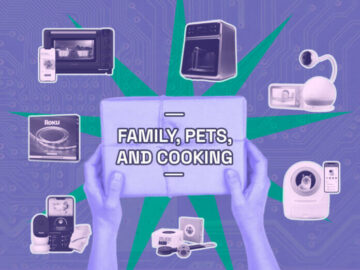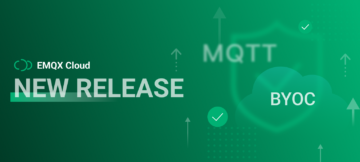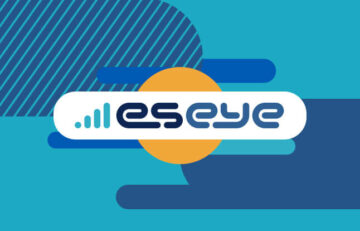
In today’s world, continuous connectivity sounds like an everyday given. But delivering it is far from simple. Uninterrupted consistent network coverage has historically been, and still is, hard to achieve. Cellular and wireless networks come with particular limitations, offering fragmented connectivity and use across devices. Power efficiency makes this challenge even more difficult as devices require a continuously active connection.
“Uninterrupted consistent network coverage has historically been, and still is, hard to achieve.”
To solve this challenge of global connectivity, we set out to test LTE CAT-1 as a new solution. Our goal was to test continuous strong connectivity even in the remotest of areas where the technology infrastructure significantly lags behind the developed world and connectivity is low. The question we asked ourselves was, could we bridge this wide gap and provide reliable internet access even in the areas with the weakest connectivity infrastructure?
The Test
We live-tested multiple tracking devices across Europe and Africa. An airplane carried multiple SODAQ-manufactured devices with the NINA/LENA series of U-blox, powered by Monogoto connectivity. Each tracking device showed the route traveled and reported from each landing location. The journey covered 10 countries, beginning in Europe, following the Nile River through Egypt and Sudan, and continuing towards the east African coastal region of Tanzania before heading further south to Mozambique, Malawi, Zimbabwe, Botswana, and finally South Africa.
At the Mobile World Congress 2018, it was highlighted that LTE-M and NB-IoT, both low-power wide-area network radio communication technologies for connected devices, could not solve the connectivity challenge in countries with limited IoT capabilities. It would take years to deploy these technologies due to the resource-intensive work required for roaming contracts with multiple providers. This may contribute to the reason why chip and module vendors have noted that sales of LPWAN modules did not meet original estimations.
LTE CAT-1
LTE CAT-1 is a ubiquitous technology used by smartphones all over the world and we believed it could offer low-cost and low-power global connectivity. CAT-1 technology has been in development for years and its potential to revolutionize global connectivity has been long anticipated. Devices with LTE (Long-Term Evolution) technology are capable of achieving higher data transfer speeds compared to older generations like 2G or 3G.
Because it is compatible with older network technologies such as 2G and 3G, even countries with outdated infrastructure can leverage their existing 2G and 3G networks. Plus, the focus on wider coverage allows network providers to extend their services to remote or rural areas that may not have had access to cellular connectivity before.
Global Connectivity Is Possible
We learned that true global connectivity could be achieved. Our key takeaway is that CAT-1 is well positioned to provide continuous global coverage even in the remotest of areas – it has the benefit of being highly efficient, and needing low power usage, without the downside of CAT-M or NB-IoT coverage limitations.
- SEO Powered Content & PR Distribution. Get Amplified Today.
- EVM Finance. Unified Interface for Decentralized Finance. Access Here.
- Quantum Media Group. IR/PR Amplified. Access Here.
- PlatoAiStream. Web3 Data Intelligence. Knowledge Amplified. Access Here.
- Source: https://www.iotforall.com/an-epic-quest-to-validate-continuous-global-connectivity
- :has
- :is
- :not
- :where
- 1
- 10
- 2018
- 8
- a
- access
- Achieve
- achieved
- achieving
- across
- active
- africa
- African
- Airplane
- All
- allows
- an
- and
- Anticipated
- ARE
- areas
- AS
- BE
- been
- before
- Beginning
- behind
- being
- believed
- benefit
- BRIDGE
- but
- by
- CAN
- capabilities
- capable
- carried
- cellular
- challenge
- chip
- come
- compared
- compatible
- Congress
- connected
- connected devices
- connection
- Connectivity
- consistent
- continuing
- continuous
- continuously
- contracts
- contribute
- could
- countries
- coverage
- covered
- data
- delivering
- deploy
- developed
- Development
- device
- Devices
- DID
- difficult
- downside
- due
- each
- East
- efficiency
- efficient
- Egypt
- EPIC
- Europe
- Even
- everyday
- evolution
- existing
- extend
- far
- Finally
- Focus
- following
- For
- fragmented
- from
- further
- gap
- generations
- given
- Global
- goal
- had
- Hard
- Have
- Heading
- higher
- Highlighted
- highly
- historically
- HTTPS
- in
- Infrastructure
- Internet
- internet access
- iot
- IT
- ITS
- journey
- jpg
- Key
- landing
- learned
- Leverage
- like
- limitations
- Limited
- location
- Long
- long-term
- Low
- low-cost
- MAKES
- max-width
- May..
- Meet
- Mobile
- Mobile World Congress
- module
- Modules
- more
- Mozambique
- multiple
- needing
- network
- networks
- New
- new solution
- noted
- of
- offer
- offering
- older
- on
- or
- original
- our
- ourselves
- out
- over
- particular
- plato
- Plato Data Intelligence
- PlatoData
- plus
- positioned
- potential
- power
- powered
- provide
- providers
- quest
- question
- Radio
- reason
- region
- reliable
- remote
- Reported
- require
- required
- resource-intensive
- revolutionize
- River
- Route
- Rural
- Rural Areas
- sales
- Series
- Services
- set
- showed
- significantly
- Simple
- smartphones
- solution
- SOLVE
- South
- South Africa
- speeds
- Still
- strong
- such
- Sudan
- Take
- Technologies
- Technology
- technology infrastructure
- test
- that
- The
- the world
- their
- These
- this
- Through
- to
- today’s
- towards
- Tracking
- transfer
- traveled
- true
- True Global
- ubiquitous
- Usage
- use
- used
- VALIDATE
- vendors
- was
- we
- WELL
- why
- wide
- wider
- wireless
- with
- without
- Work
- world
- would
- years
- zephyrnet
- Zimbabwe








